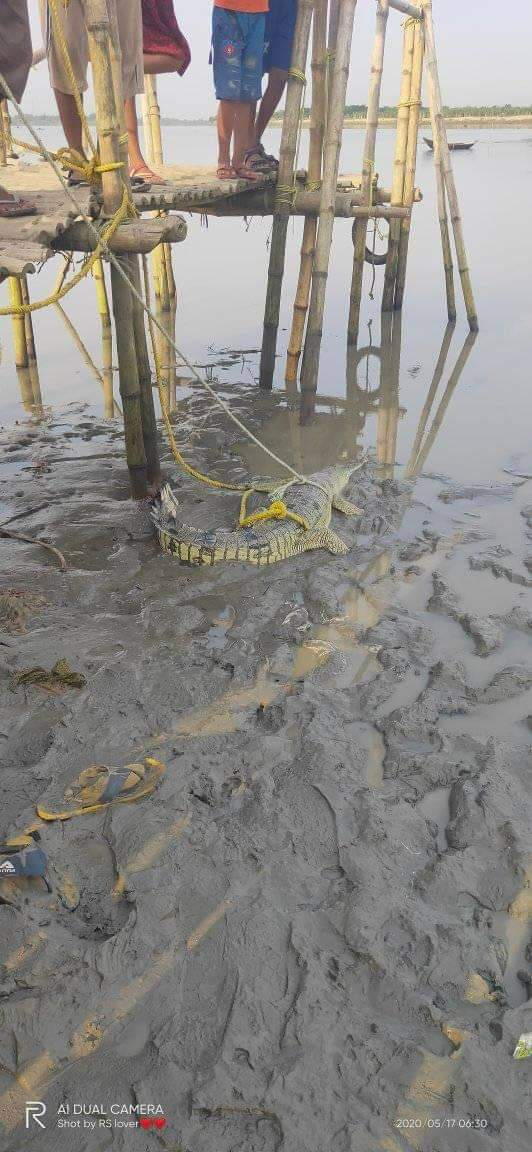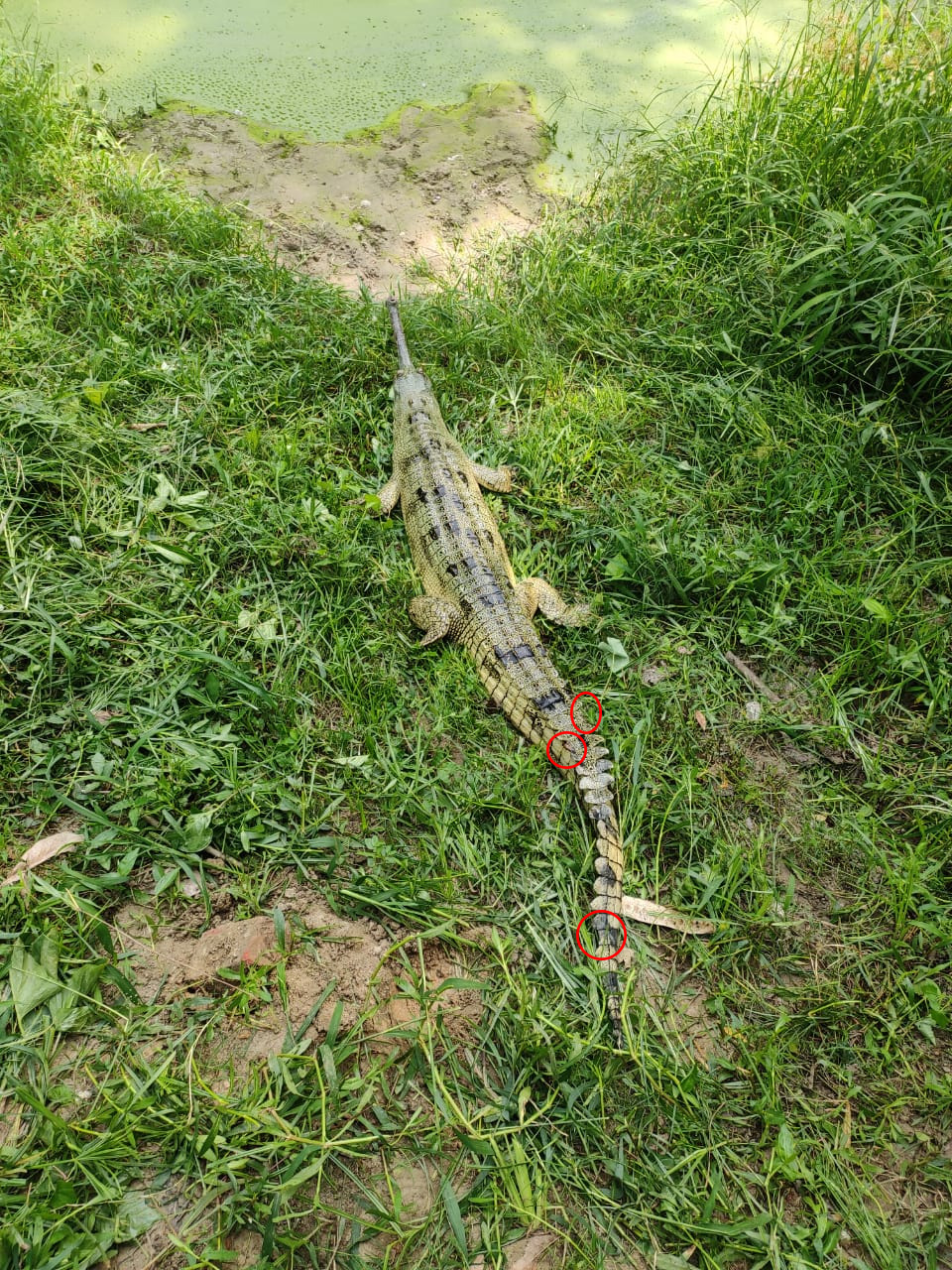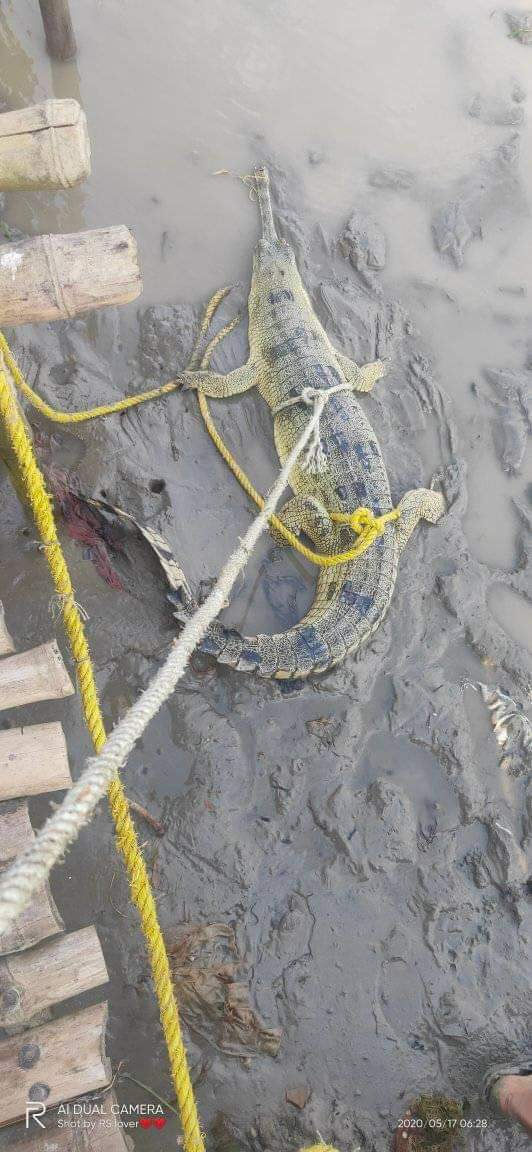New Delhi, 20 May 2020: A Gharial caught in fishing nets in the Hooghly near Rani Nagar Ghat of Nadia District in West Bengal sparked quite an interest among the fishermen and conservation biologists.
Gharials are critically endangered with only about 650 adult individuals found in the wild in sparse pockets of the subcontinent’s rivers. The National Chambal Sanctuary is the stronghold of gharial population, while transboundary Narayani-Gandak river system hosts the second largest population of this species listed in the Convention of Migratory Species (Appendix I). Gharial restocking efforts have been on for sometime in the Ganga, Ghaghra and the Gandak (known as Narayani in Nepal) river systems where they are found in pockets with minimal human disturbance. “Gharials have also been known to undertake transboundary migrations crossing river barrages from Nepal to India”, mentions Dr. Samir Kumar Sinha (Head of Conservation, WTI).

WTI’s biologist Subrat Behera working on the Gharial Recovery Project in Gandak River came across this incident on social media and recognized the tail scute markings by photographs shared by his counterparts in Nadia. Tail scute markings are uniquely coded by gharial conservation biologists for monitoring of the released gharial in the wild.
“This Gharial was released upstream in Rapti River (a tributary of Narayani as Gandak is called in Nepal) and has journeyed about 1100 km from its release site” added Subrat Behera who identified the Gharial released in Nepal, confirmed by Bed Bahadur Khadka, Gharial Conservation and Breeding Center, Chitwan National Park, Nepal.

The Gharial had traversed this distance in 61 days before getting caught up in fishing nets in Hooghly. The possible route it took was Rapti- Narayani / Gandak – Ganga – Farakka – Hooghly River.
This is not the first time that such a long range movement has been documented, in Oct 2015, a Gharial released in the Gandak River by Bihar Forest Department and WTI was captured by locals in the Mahananda River in West Bengal, this individual had travelled more than 1000 km in 234 days.
Water discharge from the Gandak Barrage in March end could have aided its downstream movement surmised Samir Sinha for this gharial caught in the Hooghly.

Prof BC Choudhary, crocodilian expert and Executive Trustee WTI emphasized the need of releasing Gharials in the winter months i.e. Nov – Feb, as this allows them time to adapt to its natural habitat. “Crocodile breeding projects often release them during summers and even monsoons which is not advisable” he stressed.
Since we are close to World Environment Day, here’s a throwback to 2016, when we discovered the third largest breeding population of this critically endangered species in India.